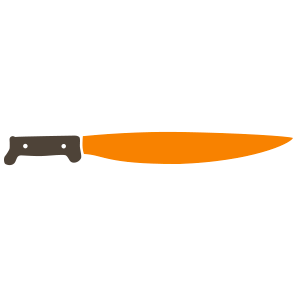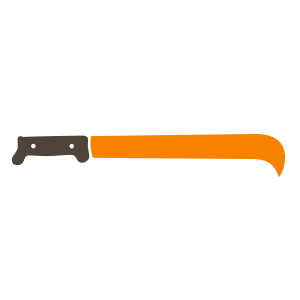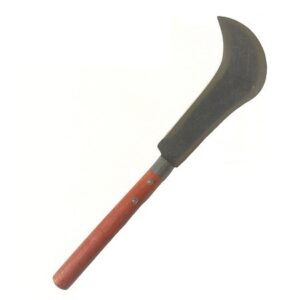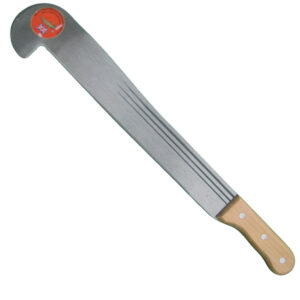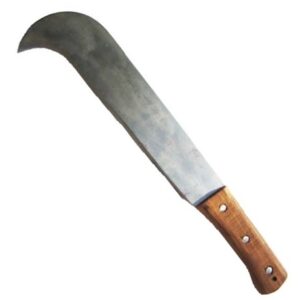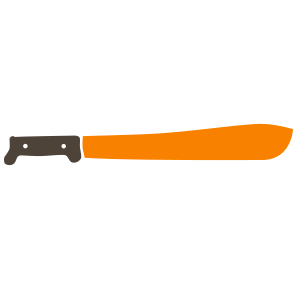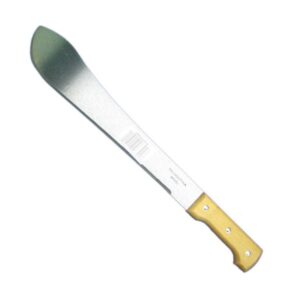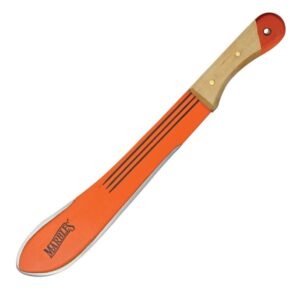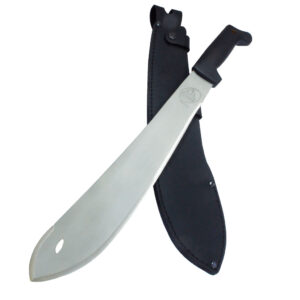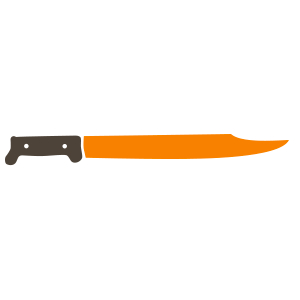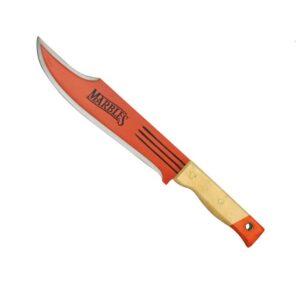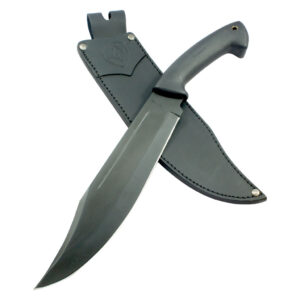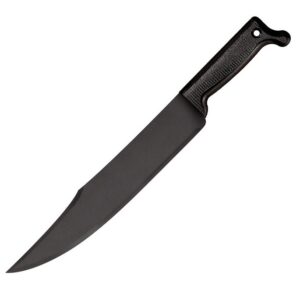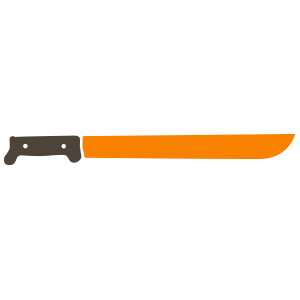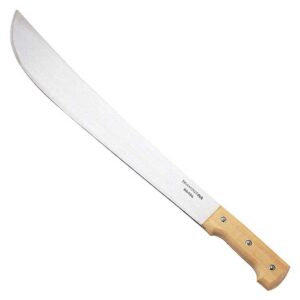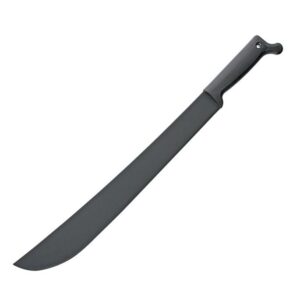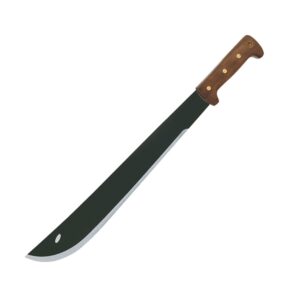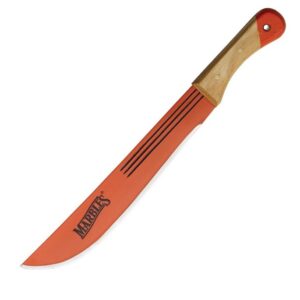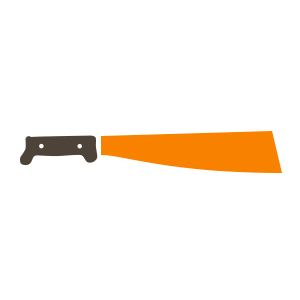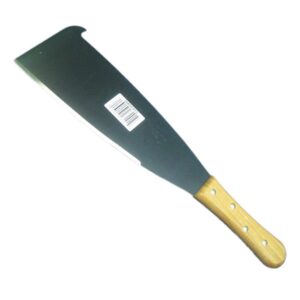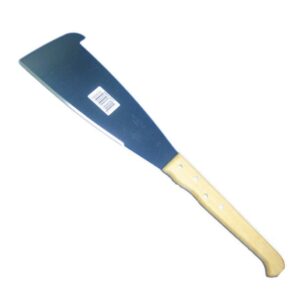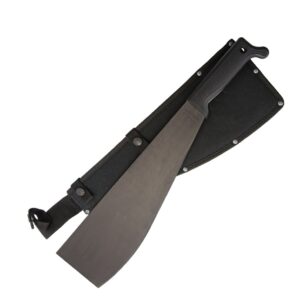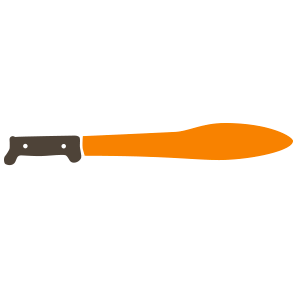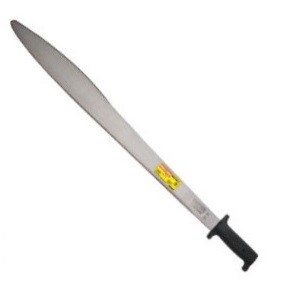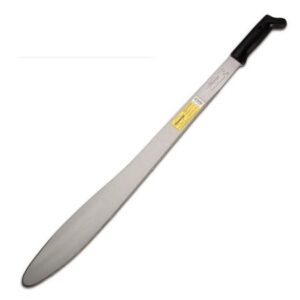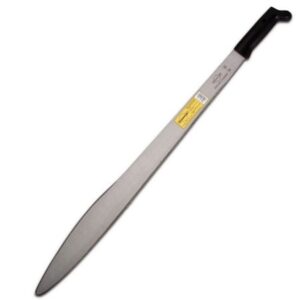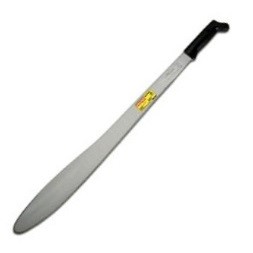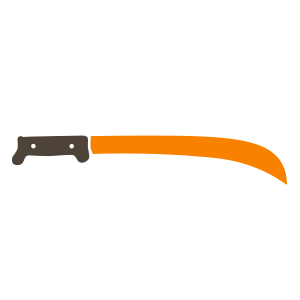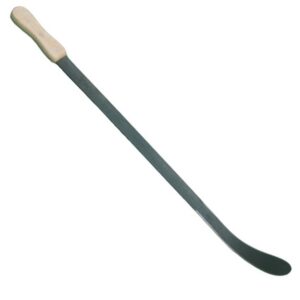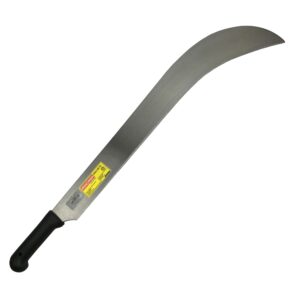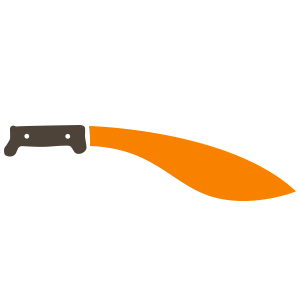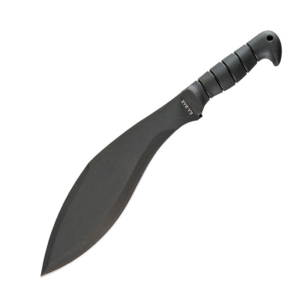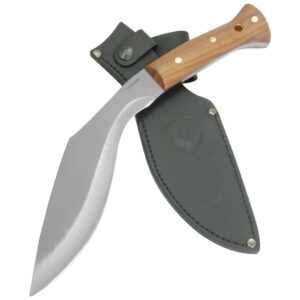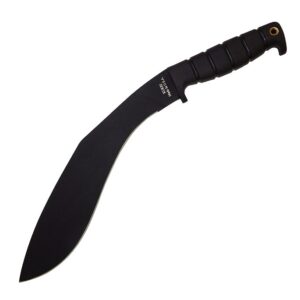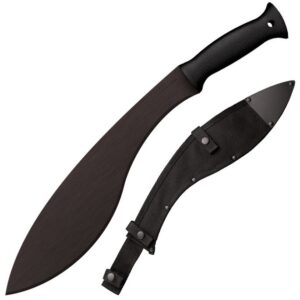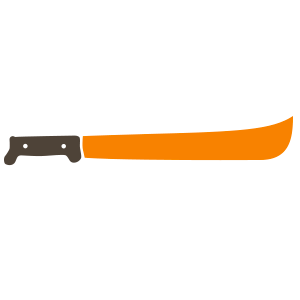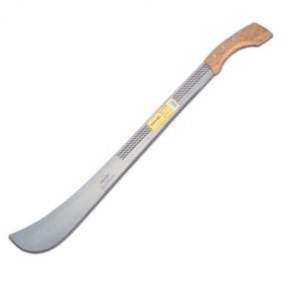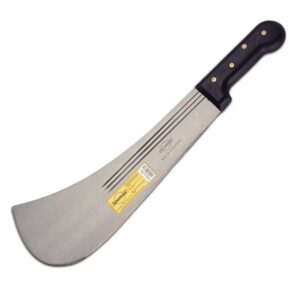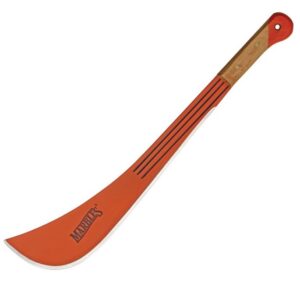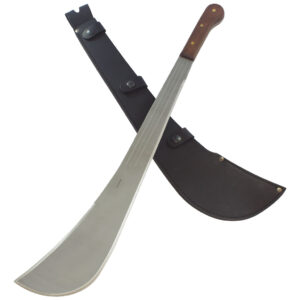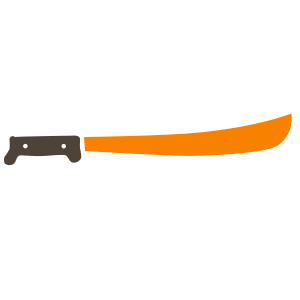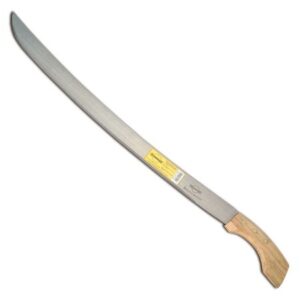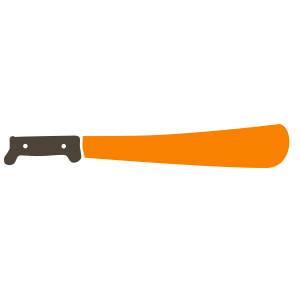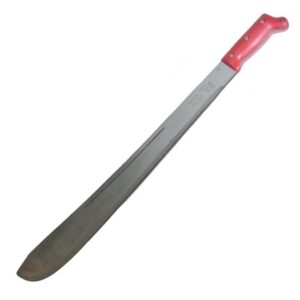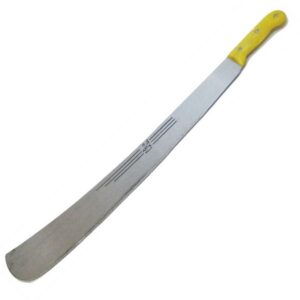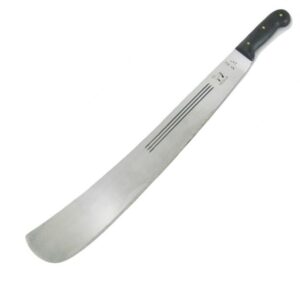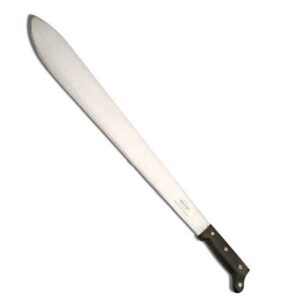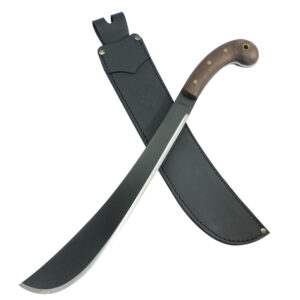 Machetes come in all shapes and sizes. Throughout its long history across the many rural areas of the world, the machete has evolved many styles, features and adaptations for specific uses and environments. Names and styles vary from region to region, and often overlap, and you may hear the same machete called by different names in different areas. Preferences for one style over another are generally subjective, and like many other things, based in large part on region, tradition and experience. The most important thing when selecting a machete is what feels right to you.
Machetes come in all shapes and sizes. Throughout its long history across the many rural areas of the world, the machete has evolved many styles, features and adaptations for specific uses and environments. Names and styles vary from region to region, and often overlap, and you may hear the same machete called by different names in different areas. Preferences for one style over another are generally subjective, and like many other things, based in large part on region, tradition and experience. The most important thing when selecting a machete is what feels right to you.
Popular Types of Machetes Include:
Barong machetes are known for their unique leaf-shaped blade, which is traditionally only sharpened on one side. The traditional cutting tool of certain tribes in the Philippines, the barong was feared by European colonizers for its ability to cut through rifle barrels.
Place of Origin: Philippines
Uses: Hunting, Livestock slaughter
Alternative Names: Barung, Rawit
Popular Barong Machetes
The billhook machete is an ancient agricultural cutting tool with a curved blade meant for chopping around objects, such as tree trunks, and for “snedding,” which is the process of stripping side shoots and buds from a branch. The hooked blade, sharpened on the inner curve, is ideally suited for gripping and cutting vines and brambles.
Uses: Billhooks are generally used for cutting around small woody material, such as grape vines, shrubs and branches. Also used for hedge construction and maintenance, and by charcoal makers for use in coppicing and woodlot management.
Alternative Names: Bagging Hook, Reaping Hook, Sheaf Hook, Coa
Popular Billhook Machetes
The bolo machete is popular in Southeastern Asia where it is a commonly used as a farming and agricultural tool. The bolo machete excels as a harvesting tool for narrow row crops, such as rice, soybeans, peanuts and mung beans due to the distinctive bulge, adding a heft to the fore-blade that provides additional chopping power.
Place of Origin: Philippines
Uses: Compact, weighted machete good for harvesting crops and chopping woody vegetation.
Popular Bolo Machetes
The Bowie machete features a clip-point or skinner tip for skinning wild game. This style is named after American frontiersman Jim Bowie and is popular amongst survivalists and backwoodsmen.
Place of Origin: United States
Uses: The distinctive skinner tip makes it the perfect utility knife for woodsmen and hunters.
Alternative Names: Large Bowie Knife, Survival Machete, Wilderness Machete
Popular Bowie Machetes
A popular all-purpose machete with a normal, straightback blade. The blade tends to be evenly weighted and fairly stout. Very portable, can be fitted with a sheath easily for carrying around.
Place of Origin: Latin America
Uses: Good for cutting green vegetation and as an all-purpose utility tool.
Alternative Names: Latin-Style Machete
Popular Bush Machetes
Wide, blunt-tipped machetes perfect for hacking corn stalks and sugar cane. Often the blade is hooked to allow the user to pull the chopped cane from the plants still standing. The thin blade thickness allows for easy cutting through cane style vegetation.
Uses: Typically used for cutting sugar cane, rice, bamboo and corn stalks.
Alternative Names: Corn Knife, Cleaver, Espading, Machete de Suelo
Popular Cane Machetes
Sharpened on both sides of the blade to allow for a sweeping cut motion on both the fore and backhand strokes. Colima machetes are typically weighted on the back side for aid in clearing on the backstroke.
Place of Origin: Central America
Uses: Great for mowing large swaths of vegetation.
Alternative Names: Acapulqueno, Caguayano, Costeno, Panzon
Popular Colima Machetes
A curved or hooked machete that can be sharpened on both sides or on the inside of the curve. The sharpened tip concentrates force on a sharp point allowing it to pierce an cut very hard materials, while the inner curve facilitates the reaping and collecting of stalked vegetation.
Uses: Generally used for cutting tall grasses.
Alternative Names: Cuma
Popular Hawkbill Machetes
Kukri have 3 parts to their blade, a pointed tip for stabbing, a wide midsection for chopping, and a narrow area near the handle for whittling and carving.
Place of Origin: Nepal
Uses: The Kukri is an all-purpose utility blade common across Central Asia.
Alternative Names: Gurkha Blade, Rawit
Popular Kukri
Machete design popular in Africa and the Caribbean. Deep belly provides weight for chopping and curvature for slicing. The upturned point can concentrate force on a small area for piercing.
Place of Origin: Africa
Uses: Good for slicing and chopping moderately thick woody vegetation.
Alternative Names: Burriquito, Daga, Liniero, Rozador
Popular Panga Machetes
Parang machetes, also known as Golok machetes, generally have a distinctive curved shape in which both the spine and the edge of the blade is curved, much like a scimitar. They tend to be long and either slightly weighted or fairly evenly weighted, and usually have a thick blade.
Place of Origin: Indonesia
Uses: Good for cutting woody material without lodging in the material.
Alternative Names: Golok, Bedog, Sable
Popular Parang Machetes
The workhorse of the machetes. The terms “weighted” or “heavy” refers to how the weight is distributed in the blade design. The heavy or weighted machete has the bulk of the weight towards the top of the blade to make chopping thick and woody vegetation easier.
Uses: The best style of machete for chopping woody or tough vegetation.
Popular Heavy Machetes
More Machete Information
Read our other valuable articles on the make, use and care of machetes:
- Machete Buying Guide
- Our 25 BEST MACHETES
- Machete Blade Materials
- Machete Handle Styles & Materials
- How to Sharpen Your Machete
- Uses of Machetes
- Machetes for Beginners
- Care & Maintenance for Your Machete
Finding the Right Machete
Now that you’re equipped with all the information you need when buying a machete, you’re ready to browse our expansive inventory and find the right machete for you.

